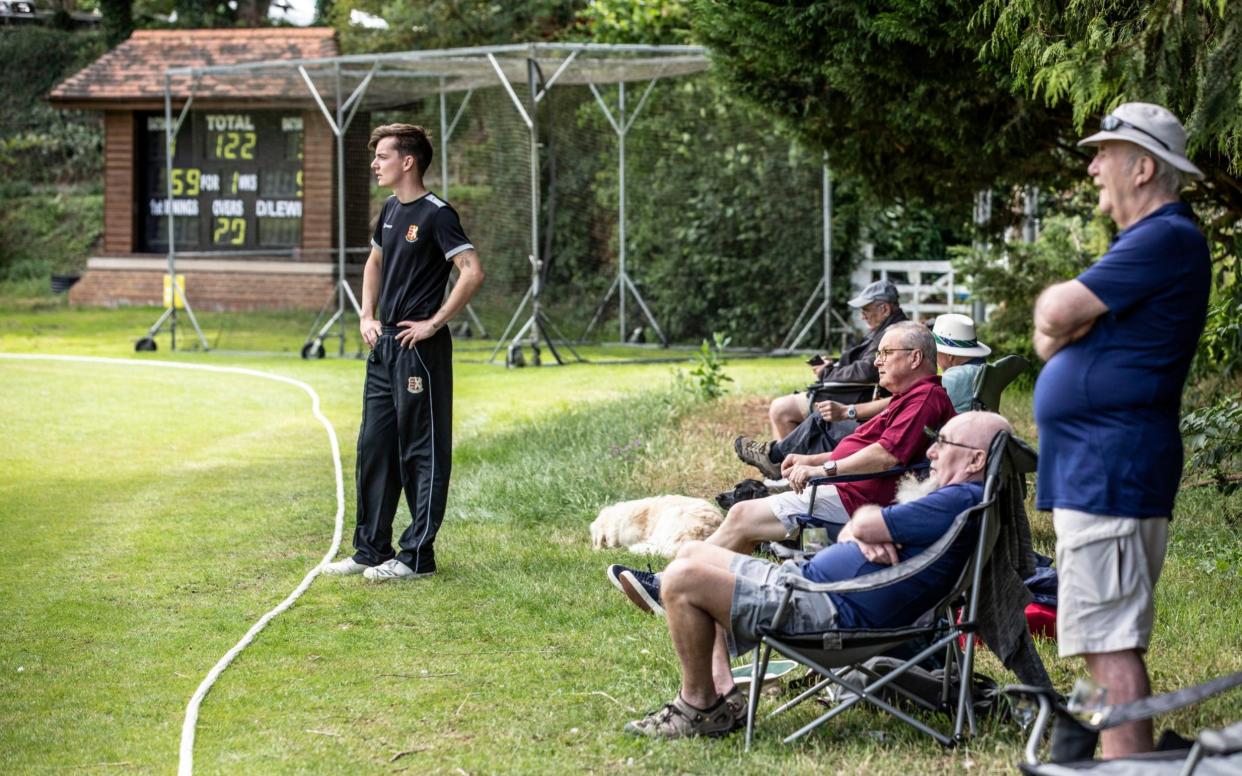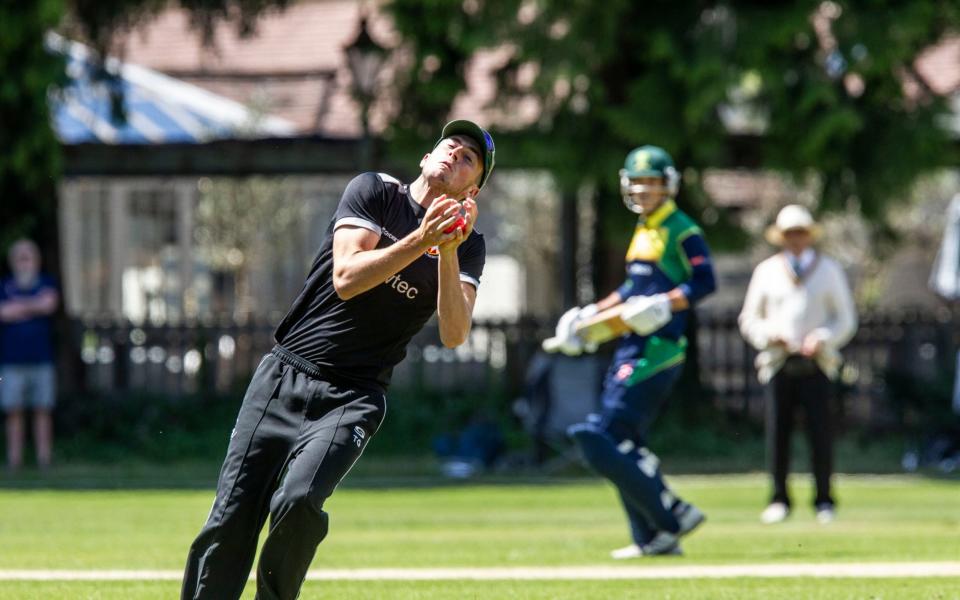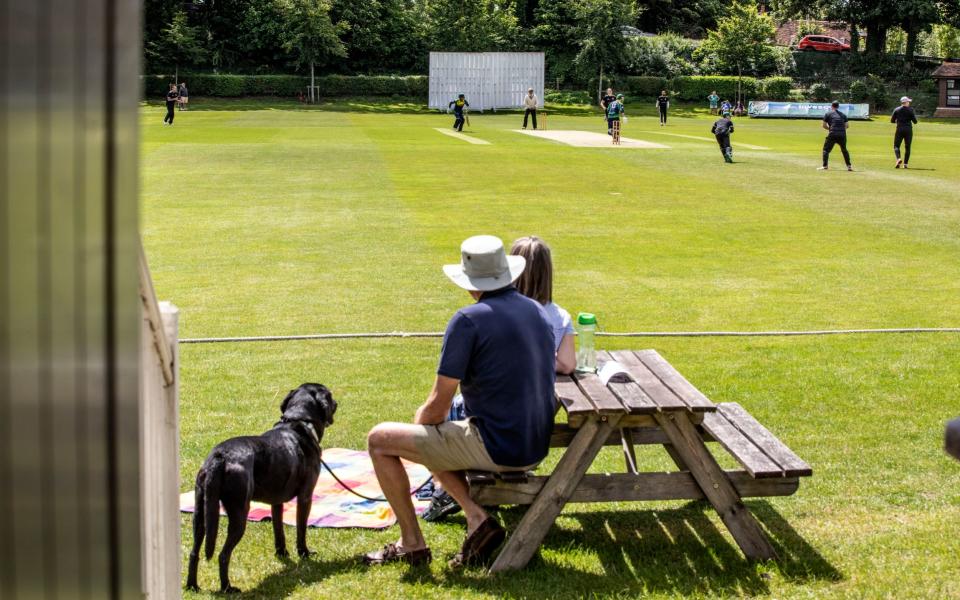More spectators than the Test match — and more action too — as club cricket returns

“There’s more people here than at the Test match,” grinned one Panama-hatted spectator, escorting a black spaniel and a golden retriever around the boundary of Henley Cricket Club’s Brakspear Ground.
“More action too,” replied John ‘Admiral’ Nelson, the Henley president, as he chomped his sandwich in front of the pavilion. As if to prove his point, one of the home team’s batsmen took a baseball-style heave that flew low and flat, before being brilliantly caught by the visiting Wargrave captain running forward from long-on.
Club cricket returned on Saturday, roughly three months later than scheduled. And at Henley, at least, these boys were not messing about.
When my editor called on Thursday, and suggested a report on 2020’s first day of recreational cricket, I had imagined rummaging around in a bucket of village-cricket cliches. Blacksmiths puffing as they steam in from the sightscreen. Portly publicans standing at slip. Dogs on the boundary chewing the leather off the ball.
But then, when I called my local village club, the secretary told me that they couldn’t get a team out. “The captain is 72 years old. Half the guys are shielding right now.”
And so to Henley, where barely anyone is over the age of 30, and most have played some kind of county cricket – whether first-class, second team, or minor counties at worst. “We’ve won the Home Counties Premier League three years in a row,” said Nelson proudly. “And that’s never been done before.”
The first surprise, on pulling into the Brakspear Ground just as the players finished their warm-up, was that nobody was wearing whites. It was a pink-ball, 40-over-a-side fixture that put Wargrave in black, while Henley wore navy blue topped off by the logo of their sponsor Ivesco. With the wicketkeeper standing well back for the first ball, this wasn’t the sort of cricket where you show up with nine men, and hope the other two are stuck in traffic rather than terminally hungover.
For top-flight clubs like Henley, lockdown has been a gruelling business. The budget sheet will show a significant hole where the parking fees from the Regatta would normally go. More worryingly, director of cricket Stewart Davison expects the number of juniors involved this season to fall by a third, to around 200.
“We’re very excited to be back,” said Davison, “but it has been a frustrating period, especially in the last few weeks, when we would have liked a little more information and advice.”

Everyone at Henley is all too aware that other sports – from tennis to basketball – have received more favourable treatment. And that the Prime Minister’s apparently unscripted observation about a cricket ball being a “vector of disease” probably extended the wait by an extra fortnight. Michael Vaughan’s uncompromising contributions to the Telegraph’s “Bring Back Club Cricket” campaign have not gone unnoticed here.
“This is marvellous, isn’t it?” mused Nelson as the sun beat down on the trestle tables and first-team captain Michael Roberts – a 31-year-old who played a few games for Hampshire in 2013 – creamed the Wargrave attack to all points of the compass. Only a few weeks ago, Roberts had been running 122 laps of the outfield to complete a fundraising marathon, which contributed around £5,000 to the club’s thirsty coffers.
You wouldn’t have thought, from the soothing melody of leather on willow, that we were dealing with anything atypical on this bright and breezy summer’s day. Until the end of the sixth over, when all the fielders trooped off the field to sanitise their hands – as well as the ball itself. This latest ritual – which would seem no more arcane to a cricket novice than googlies or nightwatchmen – had to be performed every six overs for the rest of the day.
If you looked closely, you could also see that the groundsman had cut two narrow strips of lighter green – one on each side of the pitch – that were meant to act as running tracks, encouraging the batsmen not to cross over in mid-run and commit an unnecessary breach of social-distancing.
“The first document we received from the England and Wales Board was eight pages long,” said Nelson. “Then Brian [Kenworthy, the club chairman] had to send back a detailed risk assessment, and we got something else through. I don’t know how long it was, but I know that my printer ran out of ink, put it like that.”
At this moment, our conversation was interrupted by a dreadful howling from the extra-cover region. By now, Roberts had retired on 72, his selflessness acting as a reminder that this was only a friendly to prepare for the first league fixture next weekend. But Monty Bradbury had begun laying about him with even more vehemence. A beautifully driven six had just struck the aforementioned black spaniel in the chest, before bouncing up to cut his owner’s chin.

It can be a dangerous business, watching cricket, even without a deadly virus on the loose. Happily, the dog seemed to recover well, and the owner later attributed the outburst to shock rather than injury.
With perhaps 50 spectators dotted around the boundary, and the bar serving bottles and cans from 2.30pm, the Brakspear Ground was as safe a setting as could be provided. “It always surprises me that we don’t get more people coming to watch,” said Nelson, “when the town centre is just a short walk away. We had 3,000 here in 1985, for a Graham Gooch benefit match. I was so nervous that Gooch himself bowled me out second ball.”
Henley enjoyed another brief flirtation with the international game in 2013, when their Australian overseas player – left-arm spinner Ashton Agar – received a last-minute call up to play in the first Ashes Test at Trent Bridge. Although he struggled with the ball, Agar went on to strike an unlikely 98 on debut. And yet, by that stage of the season, his top score in the Home Counties Premier League stood at just four. The statistic gives a sense of the level expected.
“This isn’t quite our full strength,” said Davison, “because the players contracted to counties – like Jack Davies at Middlesex – aren’t allowed to play yet for insurance reasons. We would normally see ourselves as trying to bridge the gap between club and first-class cricket. This year, though, we’re thinking about more about participation. The idea is to give everyone a go.”
Ten different men had a bat as Henley piled up 275 for eight – including two men retired out – from their 40 overs. Then came the innings break, in which the players snacked around the boundary rather than convening for their usual feast in the pavilion.
“Poor Paula,” said Nelson. “She does these wonderful lunches and teas. And now, no income. It’s been a tough time for everyone.”


